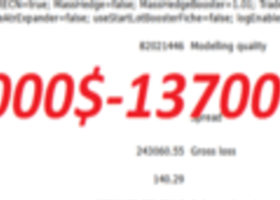
(26 FEBRUARY 2018)DAILY MARKET BRIEF 1:What higher US interest rates mean
The greenback started the week off the wrong foot and erased partially last week’s gains. The dollar fell across the board as the risk sentiment continued to improve. The dollar index was off 0.40%, down to 89.51, while stocks across the globe rallied, while Treasury yields eased slightly. US Treasury yields have increased substantially for the last few months but it failed to translate in to a strong USD. Why is this happening?
Lately, financial markets have been increasingly worried about the potential acceleration of inflation pressures. How investors did come from being worried about not enough inflation, to being worried about too much inflation, and this in just a couple of months? Indeed, the market spent the last few years monitoring closely inflation measures, hoping for stronger price pressure. At that time, an upward surprise in either the core CPI or the core PCE would trigger a dollar rally on speculation that the Fed would accelerate its tightening pace.
More recently, the opposite happened. The buck takes a dive every time economic data points toward stronger inflation. Lately, the publication of the January job report, which saw a surprise increase in wage growth, and to some extend the January CPI report, illustrates perfectly the situation. This tend to suggest that the market has reached different conclusion regarding the consequences of the Fed unwinding its massive balance and tightening short-term interest rates. Indeed, one could assume that higher interest rates implies a stronger dollar amid improving investment environment. However, higher interest rates also mean a higher cost of debt.
This has various implications, particularly for the US government and private companies. Regarding the former, the consequences are significant as higher short and long-term Treasury rates mean that the federal government’s borrowing costs will rise, which affects the budget and the national debt. The era of low-cost borrowing is ending for the government, which means higher deficit and a challenging path to fiscal sustainability. On the top of it, Trump’s tax cuts could only exacerbate budget deficit and debt. The markets are therefore right to be worried.
Regarding the effects on private companies, higher interest rates will obviously increase the cost of debt. It goes without saying that many companies will therefore become less profitable as financing costs increase. However, for companies highly indebted, which still exist only because interest rates were so low for so long, the consequences are worse. Combined with investors’ insatiable appetite for yields, the fall will be hard. Deleveraging means that many “zombie” companies will pay a high price. Eventually, higher interest rates could mean higher unemployment and slower economic growth.
The rapid surge of stocks’ volatility and the persistent weakness of the greenback suggest that financial markets are finally taking this situation seriously – and for good reasons. This is hard to tell what will be the medium and long-term consequences. However, one can assume that it won’t be smooth sailing as both private companies and the US government will be heavily impacted by this change of paradigm. It is therefore reasonable to assume that the US dollar will keep grinding lower, while the recent spike in equity volatility may just have been a warning shot. After all, there is a reason why the Fed has been so cautious in normalizing monetary policy.
By Arnaud Masset


